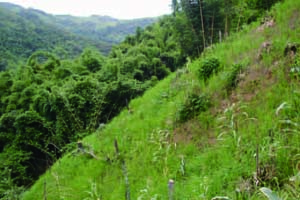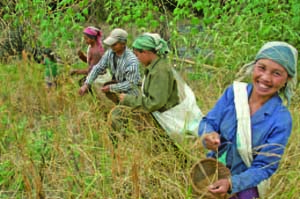Term:2014-2015
Outline of Research:

Swidden field and fallow forest
An important characteristic of “traditional” swidden in mountainous areas of mainland Southeast Asia is the efficient use of secondary vegetation. Historical literature indicates that most primary forest was in mountainous areas, where swidden was conducted. Such descriptions were written about 150 years ago, suggesting that both secondary forest and traditional swidden developed in relatively recent times. The objective of this study is to find out when the combination of these two developments occurred, through literature research. The expected result is to put in a broader perspective the present swidden, which is regarded as traditional from a historical viewpoint.
Description:

Harvesting upland rice
In the swidden system, which has been widely conducted for a long time in mountainous areas of mainland Southeast Asia, fallow forest is important because it provides various types of forest products. Most of these products are from secondary forest. The environment is important for local people because they use various environments, which have been thought to be a major characteristic of the traditional swidden system in mainland Southeast Asia. However, descriptions in historical texts written by Iwamoto, a Japanese explorer, and Pavie, a French expedition leader, show that mostly primary forest, not secondary forest, was found in mountainous areas where swidden was conducted. This therefore suggests that both secondary forest and traditional swidden developed in relatively recent years.
This study will track the transitions of swidden, vegetation and plant utilization, and relativize present swidden, which is presently regarded as traditional from a historical perspective.
In recent years, many governments in Southeast Asia have prohibited swidden. In response, some researchers have attempted to reevaluate traditional swidden in an effort to critique such policies. However, the image of traditional swidden is oversimplified in many cases. This study will provide a richer understanding of what is currently considered traditional swidden agriculture.
